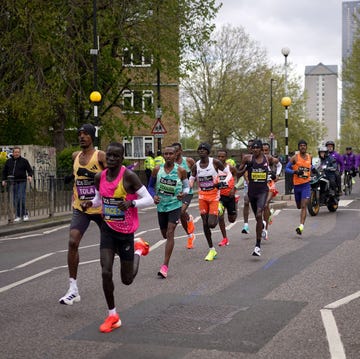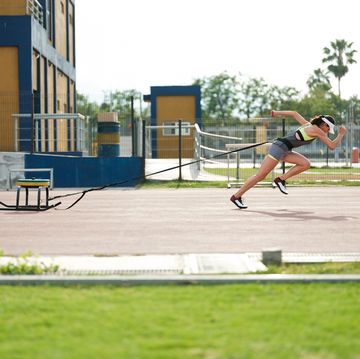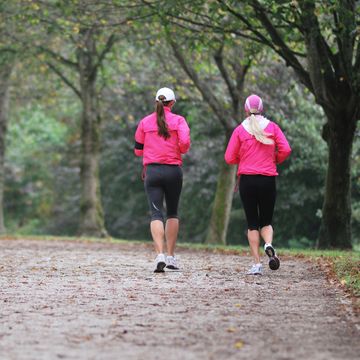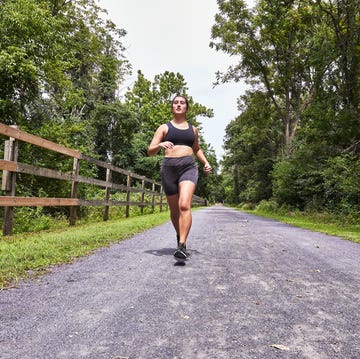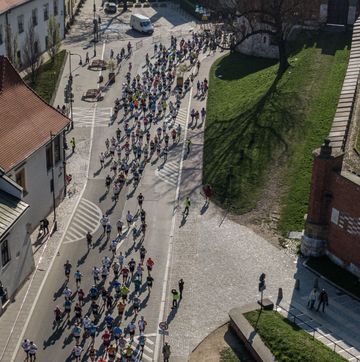To gain an advantage over your opposition, you need to prepare more thoroughly than they do. One of the simplest ways to obtain a competitive edge is through improving your downhill running skill. Most runners avoid downhills in training and use them as little more than recovery breaks during races. Not only will training on downhills help you pull away on descents during races, however, it can also improve your running ability on the flat.
As with other aspects of training, you should start with a small dose and increase gradually. Because running downhill is relatively easy on your cardiovascular system, it is also easy to overdo the jarring on your muscles, connective tissue, and joints. If you increase your downhill running judiciously, however, you will actually decrease your risk of injury because your body will adapt so that it is better able to handle descents during races. The following additional benefits can be gained from downhill workouts:
1) Increased leg turnover will improve your acceleration and speed on the flat. Sprinters have used downhill running to improve leg speed for over 30 years. Your maximal stride rate is controlled by your neuromuscular system, and as with any other skill, quick leg turnover is best achieved through practice. Downhill training teaches your nervous system to let you run fast.
2) Improved downhill running performance. I remember running next to Bill Rodgers in many races over the years and watching helplessly as he ran away on the downhills. Bill was a great natural downhill runner, but he made downhills his personal lethal weapon by honing that skill during training. You can also gain an edge by improving your technique and confidence running downhill.
3) Reduced delayed-onset muscle soreness (DOMS). When running hard downhill, your muscles work eccentrically to resist the force of gravity, which causes microscopic damage to the muscle fibers and surrounding connective tissue. This leads to inflammation and muscle soreness that can last up to five days. Fortunately, training on downhills protects your muscles from subsequent damage and muscle soreness. The muscles don’t just repair, but are actually better able to handle future eccentric loading because of structural adaptations within the muscle. A session of downhill running every two to three weeks should be enough to maintain those adaptations.
4) Gaining a race-winning gap when you crest a hill. Most runners run hard to the top of hills and then back off slightly to recover. By training to maintain your intensity over the top of a hill and down the other side, you can make a race-defining break on your competitors.
The key to optimal downhill running technique is to allow gravity to help you flow down the hill. This requires adjusting your body position forward so your body remains as close as possible to perpendicular to the hill, and increasing your leg turnover as you gain speed. Avoid the typical errors of leaning back or over-striding, which increase the braking component of downhill running, thereby increasing the jarring forces and slowing you down. To improve your balance and stay in control, keep your shoulders relaxed but allow your elbows to move out moderately from your sides.
Which downhill workouts are most appropriate for you depends on your goals and your current comfort level running downhill.
Downhill reps of 75–150 meters: Downhill reps on a gentle grass slope are a great way to learn good downhill technique and improve your leg turnover in a safe way. This is the type of workout sprinters do to improve speed. It is critical to warm up well, including a few striders on the flat. Focus on correct body position and on letting gravity assist your legs to turn over more quickly as you gain speed. Limit yourself to three to five reps during the first few sessions, particularly if you haven’t done much speedwork recently.
Up and down intervals: A great way to incorporate uphills and downhills in the same workout is to do intervals in which you run up a hill hard, then sustain your intensity over the top and down the other side. By making your efforts two to six minutes in duration (with a one- to two-minute recovery jog between), these make excellent VO2 max workouts. These training sessions are time-efficient, and reinforce the tactic of maintaining effort over the top and shifting technique to pick up speed on the downhill.
Hilly courses: Doing your day-to-day training on hilly courses is an effective way to get used to running downhills without major changes to your training program. To gain the most benefit, concentrate on correct downhill running technique and increasing your leg turnover as you run down the hill. Incorporating downhills in your daily training allows you to accumulate experience so optimal downhill running technique becomes second nature.
Race simulation: If you are training to run the Boston Marathon, you need to be able to handle the descent from Wellesley into Newton Lower Falls at 15 miles. If you are preparing for the ING New York City Marathon, your body needs to be ready for the jarring downhill into Manhattan at 16 miles. Try to simulate the downhills that you will encounter in your key races in terms of steepness, length, and where they fall within the race.
Two-time Olympian Pete Pfitzinger is an exercise physiologist.

